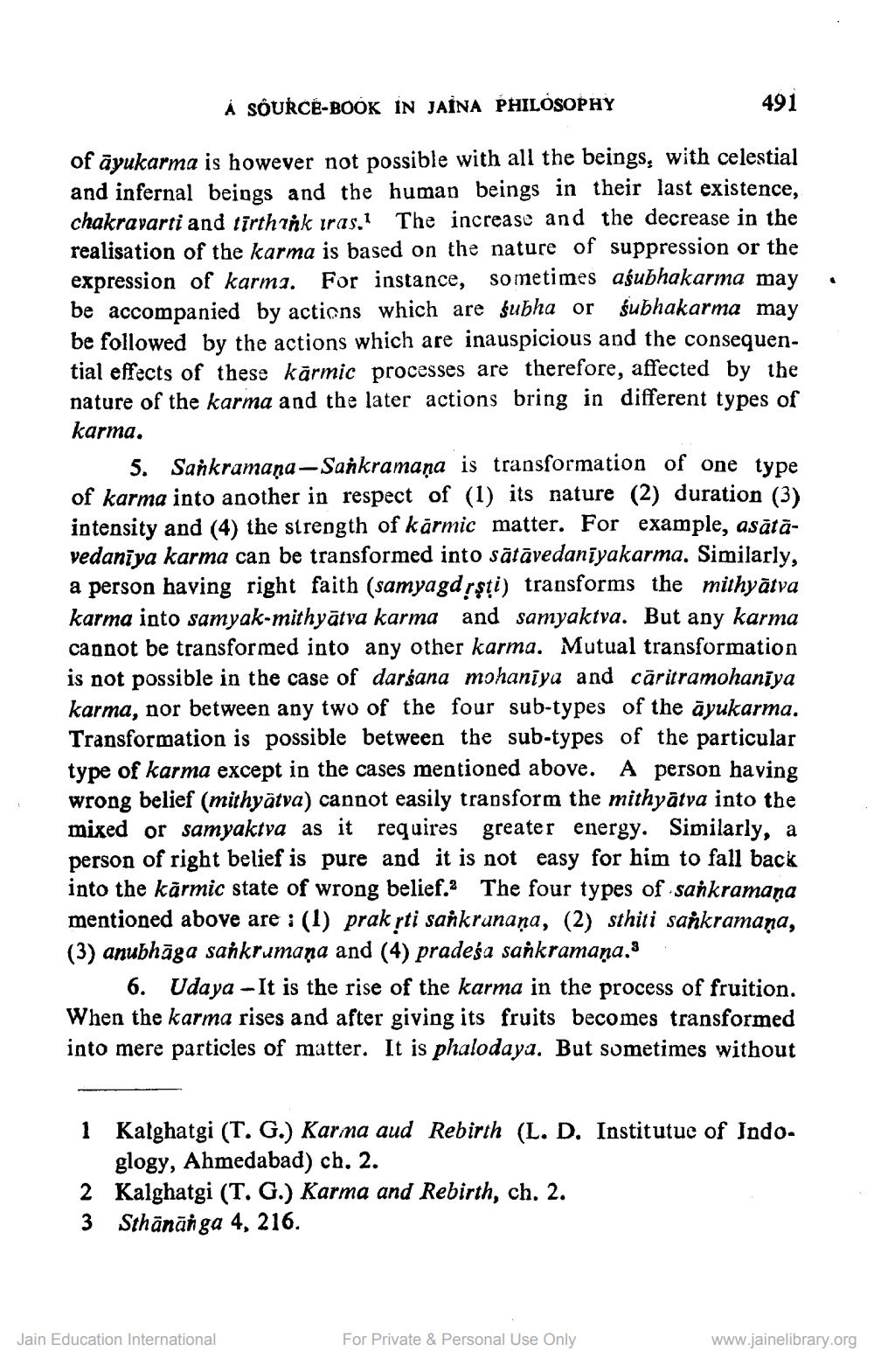________________
Á SOURCÉ-BOOK IN JAINA PHILOSOPHY
491
of āyukarma is however not possible with all the beings, with celestial and infernal beings and the human beings in their last existence, chakravarti and tirthink iras. The increase and the decrease in the realisation of the karma is based on the nature of suppression or the expression of karma. For instance, sometimes aśubhakarma may be accompanied by actions which are subha or śubhakarma may be followed by the actions which are inauspicious and the consequential effects of these kārmic processes are therefore, affected by the nature of the karma and the later actions bring in different types of karma.
5. Sankramana-Sankramana is transformation of one type of karma into another in respect of (1) its nature (2) duration (3) intensity and (4) the strength of kārmic matter. For example, asātāvedaniya karma can be transformed into sātāvedanīyakarma. Similarly, a person having right faith (samyagd rşti) transforms the mithyātva karma into samyak-mithyātva karma and samyaktva. But any karma cannot be transformed into any other karma. Mutual transformation is not possible in the case of darśana mohaniya and cäritramohaniva karma, nor between any two of the four sub-types of the āyukarma. Transformation is possible between the sub-types of the particular type of karma except in the cases mentioned above. A person having wrong belief (mithyātva) cannot easily transform the mithyātva into the mixed or samyaktva as it requires greater energy. Similarly, a person of right belief is pure and it is not easy for him to fall back into the kārmic state of wrong belief. The four types of sankramana mentioned above are : (1) prak rti sankrunaņa, (2) sthiti sankramana, (3) anubhāga sankrumana and (4) pradeśa sankramana,
6. Udaya - It is the rise of the karma in the process of fruition. When the karma rises and after giving its fruits becomes transformed into mere particles of matter. It is phalodaya. But sometimes without
1 Kalghatgi (T. G.) Karma aud Rebirth (L. D. Institutue of Indo.
glogy, Ahmedabad) ch. 2. 2 Kalghatgi (T. G.) Karma and Rebirth, ch. 2. 3 Sthānānga 4, 216.
Jain Education International
For Private & Personal Use Only
www.jainelibrary.org




